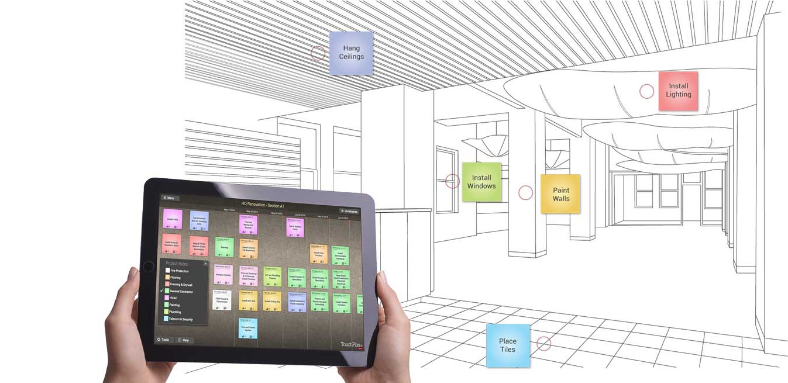
We know that constraints are those directives, resources and prerequisite work needed to start and complete a task. Constraints can fall through the cracks if you don’t stay on top of checking the constraint log regularly.
Continue reading “Technology and Constraint Logs”

The Association for Unmanned Vehicle Systems International (AUVSI), just released a report on the use of drones. Since the FAA has not issued rules for the use of unmanned aircraft systems (UAS or drones), the easiest way to use them is by applying for an exemption as a way to get around the airworthiness requirements for manned aircraft. AUVSI looked at the number of exemption applications and discovered that construction and infrastructure companies received 1,800 exemptions.
Continue reading “Drone use in Construction is Soaring”

The Plan Percent Complete is the number of assignments completed on the day divided by the total number of assignments made for the week. This number shows what subcontractors accomplished in relation to what they promised. You want subs to deliver on their promises, but you don’t want them to only make easy promises.
Continue reading “Things to remember about PPC”

We’ve all heard it before “There’s something special about putting a sticky note on a wall”, “my subs aren’t tech savvy”, or “technology isn’t lean”. It’s like they’ve forgotten the foundation of which lean construction was built upon- to save money, time, and increase efficiency. We want to maximize value and decrease waste by whatever means possible.
Continue reading “The Benefits of Touchplan”

This morning, James Benham, technologist and CEO of JBKnowledge, talked to the 2016 AGC Conference in a session about emerging construction technologies. JBKnowledge works with around 750 contractors providing technology information and solutions.
Continue reading “Emerging Technologies for Construction”

Identifying and clearing constraints early and often is key to running smarter projects. Often little things that go unnoticed can lead to big headaches. We’ve all experienced it. A permit is tied up in review because of some missing information. A critical activity is held up while awaiting design clarification… or material delivery… or both. A crew works shorthanded because some team members are double booked.
Continue reading “Save your contingency. Make identifying and clearing constraints the priority.”

One fear of working collaboratively, is that more time spent on front end planning will only serve to increase the cost of the project. Project Managers worry that implementing this on a project will make their job harder and hurt their bottom line. The reality is that when you harness the experience of your subcontractors, you lessen the amount of babysitting you have to do. The time and money put into early collaborative planning creates big savings in both, and empowers your team to get more done. Once you try it, you’ll learn to embrace this style of planning. Continue reading “Let Collaborative Planning Make Your Job Easier”

When we first bring up to benefits of collaborative planning to PMs there is usually a concern that subs will not be interested in this way to plan. They question whether it would make sense with their project teams. There are many reasons why subs should be interested in collaborative project planning. Here are the top three reasons that subcontractors get pumped about planning collaboratively.
Continue reading “3 reasons Subcontractors love Collaborative Planning”

Good planning is a fundamental tool of a successful construction project. Successful project managers get their project teams to talk and trust each other to act in the best interest of the project. This collaborative planning relies on the expertise of the people directly responsible for doing the work. It allows for a project plan with the best available alternatives.
Continue reading “How to Organize a Smarter Planning Session”

To help get your year started right, spend some time in Touchplan’s Lean Learning Center. There are lots of great articles to help with understanding Lean Construction and the Last Planner® System.
Today we wanted to highlight our Best Practices Guide to the Last Planner® System.
As most of you know, the Last Planner® System, or Last Planner®, is a short-term production planning system designed to produce predictable work flow and rapid learning in programming, designing, commissioning, and construction of projects. The name refers to the person on site who can ensure predictable work flow downstream. Owners, clients or construction companies, can use Last Planner® to achieve better performance in design and construction through increased schedule/program predictability.
Last Planner® was developed by Glenn Ballard and Greg Howell.
There are five steps to Last Planner® are:
- Master Scheduling
- Phase Scheduling
- Make Work Ready Planning
- Weekly Work Planning, and
- Learning
We have articles available for each of these steps. They include tips for milestone scheduling and pull planning, directives on how to ‘make work ready,’ as well as common mistakes to avoid in weekly work planning and percent plan complete evaluation.
All of this great material is in one place for your convenience. Bookmark our page and visit it again and again until you are consistently using your best practices.


